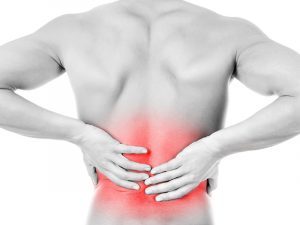In this blog post, I will dig into one of the frequently asked questions in the clinic. Is it okay to push through pain in my shoulder, or should I stop? Is it safe to squat with lower back pain? Et cetera, et cetera…
Pain is an important protective mechanism and we all experience it. Think of it as an alert system, telling you if there is something that is not quite right. But pain can also be like any other alert systems, it can give you a false alarm, as pain can be present without any structural/biological changes. Although that is a whole other topic for us to cover next time.
There are a few important points that I would like you to think about in order to answer your questions of when to keep going or when to take a pause when pain is present.
Point #1. Is there a sudden onset of sharp pain?
When an injury is traumatic, (eg. ankle sprain, sudden onset lower back pain, shoulder dislocations, falling) then the answer is that you probably should stop what you’re doing until you’re cleared by your physio or doctors to do so. Your healthcare professional can help you with ruling out any serious injuries (such as fracture, muscle or ligament tear). Rule of thumb: if there is sharp pain, stop that exercise, and get it checked out.
Point #2. Is it more of a dull pain that gets worse as you continue?
When an injury is of an insidious onset (pain presents itself slowly, and there is no trauma), it generally means there is an overuse injury. Muscles and tendons are mostly the victims of these types of injuries. As the name suggests, overuse injury is caused by overloading the muscle or tendon either through high load or high repetitions when they are not ready for such volume of load. With this type of pain, you want to keep your pain level within a 3 out of 10 (10 is childbirth pain, of couse). This applies as you’re doing the exercise, immediately after, and the day after. So, if you feel pain that is a 5 out of 10 the day after, that means you’ve pushed yourself a little too much.

Point #3. Is it a constant pain? Or does it wake you up at night?
A constant pain means pain is present while you’re exercising AND it’s just as bad when you’re resting. This type of pain and/or pain that wakes you up at night can indicate a serious issue that requires medical attention (eg. fractures, infections, etc). So, if you’re experiencing it, book yourself in with a GP or a physio to get clearance to continue with your exercise program / sports.
Point #4. Is it safe to continue squatting or deadlifting with lower back pain?
Lower back pain can be very tricky to manage as there is a high recurrence rate. You might have an on again and off again kind of relationship with your back pain. Or you might have had only 1 or 2 episodes in the past, but the pain was quite bad. The answer for you regarding this is going to depend on the kind of back pain you have. If you had an acute lower back pain where pain came suddenly and is quite severe, you might want to skip your squatting / deadlifting for a little bit, until the pain settles to a much more tolerable level. However, if you’ve had lower back pain for quite some time (on and off), squatting / deadlifting with a mild discomfort, should be okay. In either case, you should be performing spine and/or hip mobility exercises on top of strengthening your core muscles (including gluteal muscles) in isolations between your lifting sessions. In addition, start with lighter weights first, and see how you feel. Go easy if you feel any discomfort. “What if my lower back pain is referring down to my leg?” Then the answer is go to your physio first, as pain, pins and needles, or numbness in your leg that’s referred down from your lower back can indicate neural issues that need to be sorted first.

Those are the main factors that should help with your sessions in the gym or on the field. I hope this post has given you a bit of clarity regarding pain during training. If you’re still in doubt, it’s always the safer option to ask your physio or GP. The physios at INSYNC get these questions a lot, and we’re always happy to answer them. If you’d like more information on this topic or any other unrelated matter, you can call us at (02) 7226 3432, or email us at (info@insyncphysio.com.au).
Thank you for reading.
Sources for pictures:
